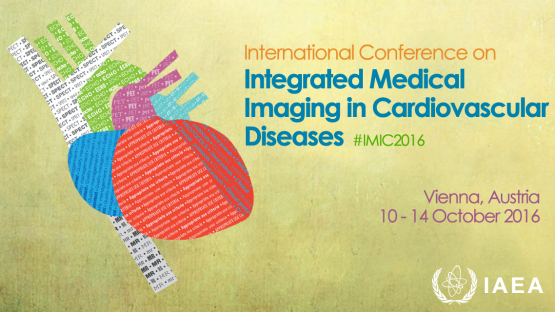Incidence of cardiovascular diseases (CVDs) is on the rise around the globe, affecting at least 17 million people in the world. But premature death can often be avoided through lifestyle changes, preventive measures and with the timely use of diagnostic imaging tools using ionizing radiation. An IAEA conference next week will provide insights into the recent trends in medical imaging and reflect on the challenges faced in many low- and middle-income countries.
“Cardiovascular diseases are one of the main priorities in the health care systems of many IAEA Member States,” said Diana Paez, Head of the Nuclear Medicine and Diagnostic Imaging Section at the IAEA. “Identifying appropriate management strategies is of the utmost importance, as the World Health Organization estimated that more than 23 million people will die annually due to CVDs by 2030, and 80% of the mortality burden is borne by low- and middle-income countries.”
Medical imaging, including molecular nuclear science, is extremely important in that it offers strategic advantages in both diagnostic and therapeutic decision-making, according to Paez. “It provides invaluable inputs for different stages of CVD management, including diagnosis, staging, treatment, prognosis and follow-up.”
The IAEA conference, titled International Conference on Integrated Medical Imaging in Cardiovascular Diseases (IMIC 2016), is designed to provide clinicians, scientists and professionals the opportunity to review and exchange insights on the latest developments in various aspects of integrated medical imaging as applied to CVDs, including single photon emission computed tomography (SPECT), positron emission tomography (PET), echocardiography, computed tomography (CT) and magnetic resonance imaging (MRI).
Over 350 participants have registered, and 200 of them have submitted scientific abstracts. Selected papers cover topics ranging from Member States’ experience with different medical images techniques to the broader issues of medical physics, instrumentation and image processing and analysis related to CVDs. All participants will receive 27 continuing medical education (CME) credits of the European Accreditation Council for Continuing Medical Education (EACCME).
Strengthening the capabilities of Member States to address the needs related to the prevention, diagnosis and treatment of health problems through the application of nuclear techniques is part of the IAEA’s mandate. “With our expertise and experience, the IAEA contributes substantially to the global health agenda to address these diseases and improve health in all of Member States,” Paez said.
New publication and social media contest
In addition to the new web app (NUCARD) designed to help medical practitioners better treat cardiovascular diseases launched last week, a new IAEA publication entitled Nuclear Cardiology: Guidance on the Implementation of SPECT Myocardial Perfusion Imaging (Rev. 1), has just been released. It will be available in print for the first time during the conference, and participants can win a copy in a social media contest.
Throughout the week, use the hashtag #IMIC2016 to tag yourself on Twitter, Facebook or Instagram. The 20 most popular pictures/posts/comments/tweets will be selected at the end of each conference day and their authors will receive the publication as a prize.
The conference sessions will also be livestreamed here 30 minutes prior to the start of each session.




